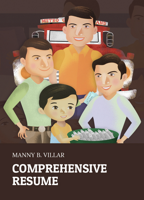
Measured Response
It is nice to see people going out again. I saw families roaming our malls again, friends chatting over coffee. Strangely, I have missed the cacophony of noises of people talking and coffee machines whirring. After months of “captivity” because of lockdowns, people are understandably excited to go out of their houses again. Daily coronavirus cases have been on the decline and the government has lowered the alert levels on restrictions. And of course, it is the Christmas season.
But the Omicron variant is threatening to disrupt our happy holiday season. It is the latest variant of the COVID-19 virus that the World Health Organization (WHO) has designated as a “variant of concern.” Many countries acted immediately and banned travel from areas where the variant has been detected. The Philippines did the same and some government officials have raised the prospects of requiring face shields again and maybe raising the current alert level.
I think it is very important for the government and the public to take this emerging Omicron variant seriously. We certainly do not want to experience another surge in the number of daily injections. But I also think that government needs to provide a measured response instead of rash decisions that would put the economy at further risk. We have had about two years of experience dealing with the pandemic. We now have access to information that would allow us to compare our actions with the responses of other nations who have been successful in balancing the need to control the virus and keep the economy open. As Albert Einstein once said: “The only source of knowledge is experience.”
I hope we learned our lesson: Lockdowns do not work. Its ability to stop the spread of the virus has not been clearly demonstrated by past experiences. Worse, it has the ability to not only damage the economy but the economic, physical, emotional, and psychological well-being of people. A full lockdown is unnecessary and an overreaction at this point in time. What we need is a measured response.
The government task force on COVID-19 should heed the advice of WHO chief Tedros Adhanom Ghebreyesus who last week said, “We call on all member states to take rational, proportional risk-reduction measures.” The WHO further urged countries to strengthen the capabilities of their healthcare system, vaccinate more people, and “stick to preventive measures such as mask-wearing and social distancing” to fight a possible surge caused by the Omicron variant.
This surge is so much different than past outbreaks because now the Philippines has vaccinated a lot more people. We have administered more than 90 million jabs which fully vaccinated 34.53 percent of our entire population. Kudos to the government for vaccinating 7.6 million Filipinos during the three-day national vaccination drive conducted all over the country. In the capital region of Metro Manila, more than 90 percent of the population has been fully vaccinated.
Government should focus on increasing the vaccination rates all over the country by continuously procuring vaccines and increasing its logistical capability to deliver the vaccines in a timely manner. Booster shots are also imperative in order to provide better immunity for those who have completed their two jabs six months ago. But beyond vaccinations, the government needs to increase hospital and ICU beds in order to better prepare our health care system in case there is indeed a surge.
In the meantime, local officials and the public should cooperate to ensure that health protocols are observed. We are seeing perhaps a glimpse of our “new normal.” A situation where we now understand how to co-exist with this virus. We should not underestimate the dangers that this particular variant poses even as scientists are still uncertain whether Omicron causes milder symptoms than the other variants.
The whole point is not to panic and resort to knee-jerk policy responses. The head scientist of WHO, Dr. Soumya Swaminathan, is correct: “How worried should we be? We need to be prepared and cautious, not panic, because we’re in a different situation to a year ago.” This is the correct response to the new variant. We do not want to be complacent but we do not want to be unnecessarily agitated. Let us all have a Merry Christmas and a Happy New Year. Well, maybe a Merry and Cautious Christmas, and, a Happy and not panicky New Year.
Source:




